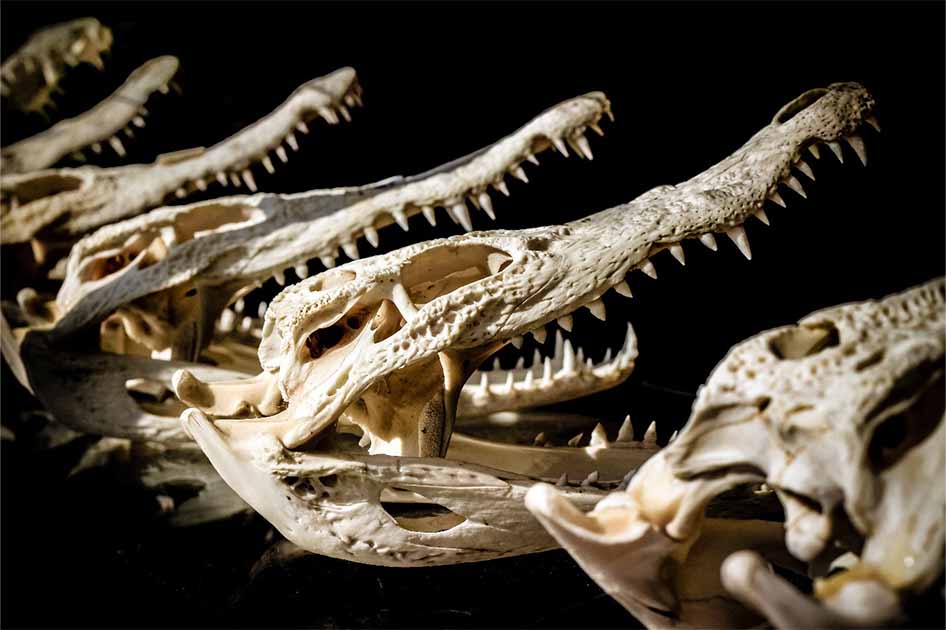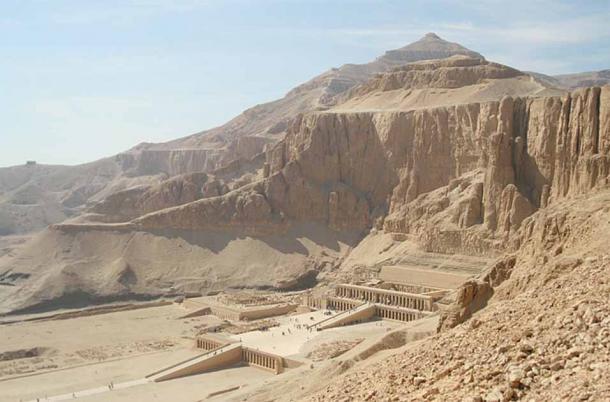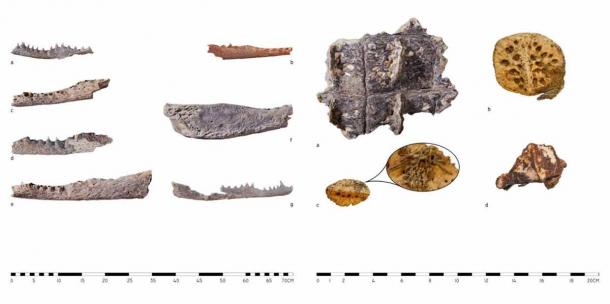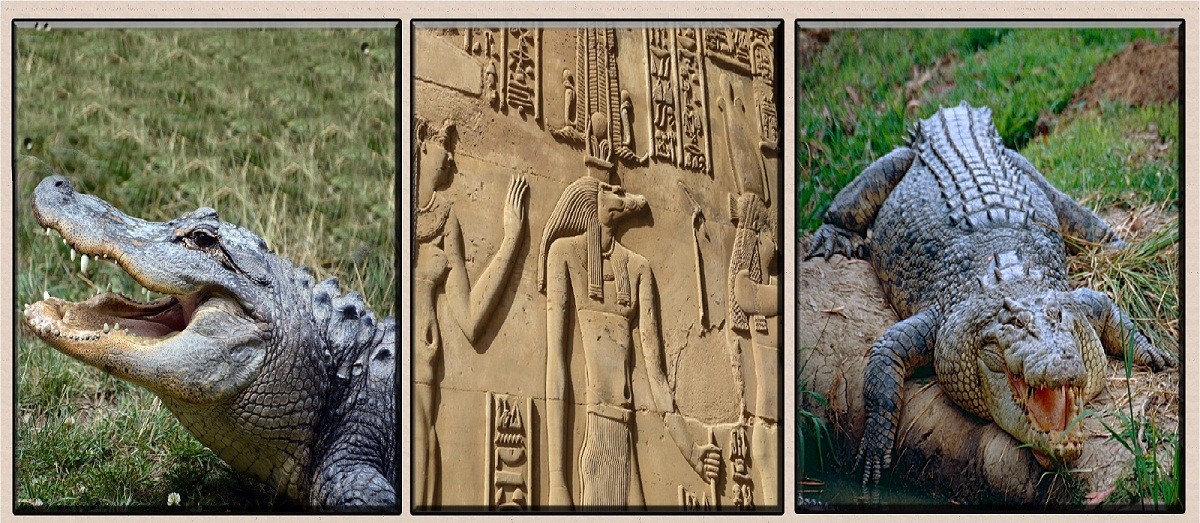Archaeologists excavating the Theban Necropolis in Egypt have made the extraordinary discovery of nine crocodile heads placed inside two tombs belonging to high-ranking nobles.

The discovery was made by a team of archaeologists from the Centre of Mediterranean Archaeology at the University of Warsaw, led by Dr Patryk Chudzik. Their research has been published in the Journal of African Archaeology . Dr Chudzik told Newsweek that the discovery was “the first of its kind”.
Crocodile Remians Found for the First Time Inside Egyptian Tombs
According to the Onet Podroze , Dr Chudzik told the Polish Press Agency (PAP) that this is the first time crocodile remains have been discovered inside tombs in Egypt. Previously, archaeologists have found crocodile mummies buried inside temples.
Talking to Newsweek, he explained:
“This is a completely unusual discovery and the first of its kind in the history of research in Egypt. We know of many crocodile mummies that have been found along the Nile. They are all mummies of whole crocodiles that have been deposited in specially prepared catacombs of sacred animals, in this case, crocodiles or sacred animals of the god Sobek.””In our case, things are different. Firstly, only the heads and not the entire bodies of these Nile reptiles have been deposited in the tombs where we work. Secondly, they were not mummified but only wrapped in linen (there is a significant difference in this, as no preservatives were used). Finally, the remains were found in the tombs of humans, not the catacombs of sacred animals.”

Temple of Hatshepsut near the Theban Necropolis
The Theban Necropolis
The Theban Necropolis is located on the west bank of River Nile , opposite Thebes (in Luxor) in Upper or southern Egypt. It was used for ritual burials throughout the pharaonic period, but especially under the New Kingdom from the 16th century BC to the 11th century BC.
The crocodile skulls were found when the archaeologists were digging at two tombs in the Necropolis of el-Asassif near the Mortuary Temple of Hatshepsut . The University of Warsaw team has been studying the two tombs since 2013.
The Tombs and Their Incredible Contents
The tombs belong to two top officials during the reign of Pharaoh Nebhepetre Mentuhotep II (r. 2055-2002 BC). The pharaoh is credited with reuniting Egypt after the widespread fragmentation of the country during the dark First Intermediate period.
While one of the graves is that of Chancellor Chetti, a high official, the occupant of the second is anonymous. The archaeologists believe he was a vizier, a position comparable to today’s prime minister, under the same pharaoh.
Inside these two tombs, the University of Warsaw team has recently discovered nine crocodile heads wrapped in linen but not given any special treatment for mummification. The skulls belong to Nile crocodiles, a species still to be found in the Nile river.

Some of the crocodile head remains found at the Theban necropolis tomb
Only fragments of skulls and teeth have been found. While this could be because the crocodile heads were not treated for preservation, it is more likely owing to the carelessness of the tombs’ first researcher Herbert Winlock, from the Metropolitan Museum of Art, who studied the tombs a century ago. Researchers of the time focused on finding more valuable artifacts like jewelry and sculptures and had scarce interest in animal remains. They just dumped any such finds in discard piles.
A Rare Practice but Not Unknown
Placing of crocodile heads inside tombs was, according to Dr Chudzik, certainly unusual but not entirely unprecedented. He believes that earlier researchers paid scant attention to such finds that had little value from the antiquarian point of view and that is why there is no earlier record of such discoveries in tombs. He believes that similar offerings may have been placed in other tombs of rich individuals but it was not a rule.
“We cannot exclude the possibility that the crocodile heads were nevertheless of exceptional importance and indicative of the exceptional position of the deceased, as we do not know of such finds from tombs belonging to people from lower social classes,” Dr Chudzik told Newsweek. “In both our cases, we know that the owners of the tombs were the most important officials at the royal court. I can also tell you that during the past season, a few weeks ago, we found the remains of crocodile mandibles in another tomb, now in this third one. It too, belonged to an important official, so we can already slowly speak of a phenomenon that was hitherto completely unknown,” he added.
The Significance of Crocodiles in Ancient Egypt

Crocodiles were worshipped in ancient Egypt as the god Sobek, who was represented either as a crocodile or a human with a crocodile head. Sobek was associated with strength, agility, pharaonic power and military prowess.
Although the remains are too scant to allow them to determine how the heads were severed, the archaeologists believe the crocodile heads were offerings to the individuals buried in the tombs. They likely had a symbolic significance associated with the god Sobek who was often hyphenated with the important Egyptian deity Ra and worshipped as Sobek-Ra.
This is the first time animal bones discovered inside Egyptian tombs have been spotlighted. It has the potential of offering Egyptologists a new area of study. As Dr Chudzik told Newsweek, “The discovery of these remains opens up an extremely interesting discussion on the significance of animal remains discovered in ancient Egyptian tombs. As it turns out, they were not mere sacrifices, but had symbolic significance, in the case of the crocodiles it was most likely a reference to the god Sobek-Ra.”








